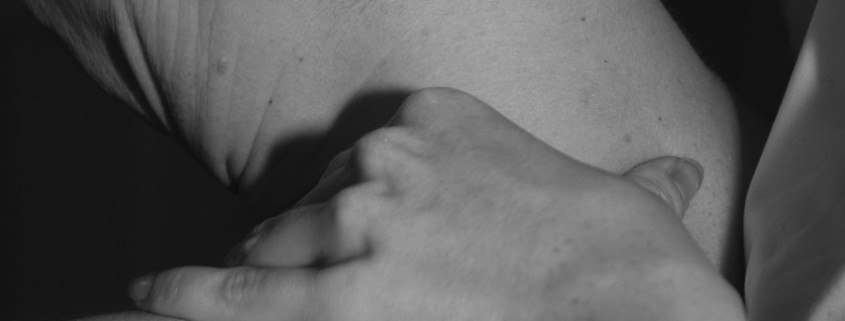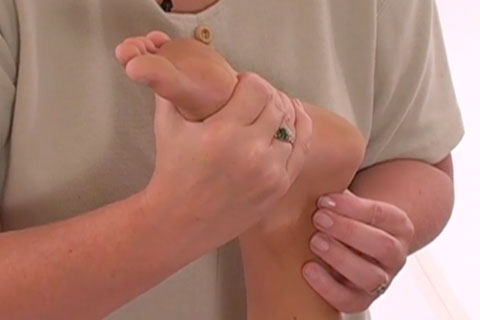Slow-Stroke Back Massage to Treat Leukemia
Leukemia, sometimes referred to as blood cancer, affects the blood forming tissues in the body. This can make an individual prone to excessive bleeding and infection. Leukemia itself and its treatment can cause a cluster of symptoms, most commonly pain, fatigue, and sleep disorders. These symptoms are related in that: pain can interfere with sleep quality, lack of sleep can increase fatigue, and fatigue can increase sensitivity to pain. In addition, cancer-related fatigue is more severe than standard fatigue, and cannot be alleviated by more sleep.
These symptoms can have a drastic effect on a patient’s quality of life. He or she may have difficulties socializing, may suffer from mood disorders, may be unable to carry out common, daily tasks, and more. Unfortunately, many treatments do not effectively treat this symptom cluster and many leukemia patients suffer daily.
The rates of leukemia are increasing worldwide. Therefore, researchers Miladinia, Baraz, Shariati, and Malehi (2017) conducted research about massage’s efficacy of treating this symptom cluster. Currently, only one research study addressed the use of massage as an additional form of treatment in leukemia patients (Taylor, Snyder, & Bourguignon, 2009). Massage, and many other forms of alternative treatment, can pose risks to leukemia patients that might not exist for other cancer patients – the heightened risk of infection and bleeding means treatments like acupuncture and deep massage are incredibly dangerous and must be avoided.
The researchers recruited 60 adults with leukemia for their study. 30 of these participants were randomly assigned to a massage group, and the other 30 participants were randomly assigned to a control group. The massage group would receive a slow-stroke back massage (SSBM) immediately after undergoing chemotherapy for a total time of 10 minutes. These 10-minute massages would happen three times a week over the course of four weeks. The control group received routine care after chemotherapy. The SSBM was as follows:
- Vaseline was applied to the skin with the participant in a seated position.
- Small circular strokes with thumbs on the neck (20 strokes in 30 seconds)
- Surface strokes from the base of the skull to the sacral region using the palm of one hand and repeating the action on the other side of the spine using the palm of the other hand, while the first hand would move toward the base of the skull (60 strokes in 120 seconds)
- Hand strokes along the shoulder blades using the thumb (20 strokes in 30 seconds)
- Hand strokes using the thumb on either side of the spine from shoulder to waist (10 strokes in 30 seconds)
- Sweeping strokes from the neck to the sacrum area using the palms of both hands (40 strokes in 90 seconds)
- This routine was repeated, then the massage concluded.
The researchers measured the intensity of the symptom cluster (pain, fatigue, and sleep disorder), as well as quality of sleep.
At the conclusion of the study, the researchers discovered that SSBM significantly decreased the intensity of the symptom cluster and significantly increased the quality of sleep. This discovery seems to align with results from the only other study of massage and leukemia, in that massage provides significant relief for leukemia patients. The other study found significant relief after a 7-week intervention, whereas this study found significant results after a 4-week intervention. While both studies did discover that massage is a suitable, complementary therapy, it should be noted that the effects are short-term. Miladinia, Baraz, Shariati, and Malehi found that the effects of the massage had faded a week after the study had ended, with participants reporting that their symptoms began worsening.
Regardless of its short-term effects, SSBM seems to provide a safe, noninvasive, and nondrug treatment that can improve the quality of life and level of comfort for patients with leukemia.
References:
Miladinia, M., Baraz, S., Shariati, A., & Malehi, A. S. (2017). Effects of Slow-Stroke Back Massage on Symptom Cluster in Adult Patients With Acute Leukemia. Cancer Nursing, 40(1), 31-38. doi:10.1097/ncc.0000000000000353
Taylor, A. G., Snyder, A. E., & Bourguignon, C. M. (2009). 123. Effects of massage on AML treatment-related symptoms and health-related QoL. Brain, Behavior, and Immunity, 23. doi:10.1016/j.bbi.2009.06.128



Follow Us!